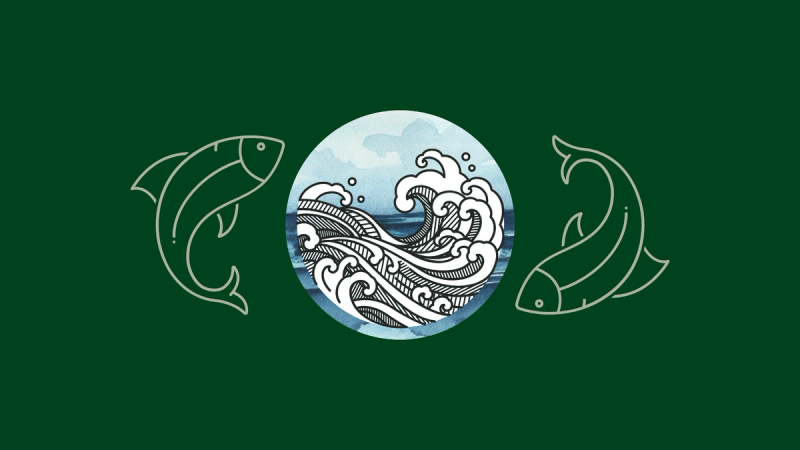In 1556, Jean de Léry sailed across the Atlantic Ocean, the “abyss of water that is the Western Sea.” When he saw giant porpoises, sea turtles, and flying fish—just a few of the marvels and terrors he witnessed—he remembered Psalm 104:25–26: “The sea, vast and spacious, teeming with creatures beyond number—living things both large and small. There the ships go to and fro, and Leviathan, which you formed to frolic there.” Between bouts of nausea and vertigo, as strong waves tossed the ship up high and thrust it low, he thought of Psalm 107:23–30 and those mariner merchants in the tempest, who “reel and stagger like drunkards, who are at their wit’s end . . . who plead with God to hush the storm.” That Léry relied on the Psalter to make sense of his surroundings is both remarkable and hardly surprising. He was then only twenty-two years old, but he was also one of fourteen deeply committed Huguenots, or French Reformed, sent by John Calvin’s church in Geneva to form the first Protestant mission to the New World.
Léry and his companions arrived in the Bay of Guanabara, “Antarctic France”—a fortified island near present-day Rio de Janeiro, Brazil—having sailed from the Norman Port of Honfleur, where the River Seine meets the English Channel. The little French colony there was run by Nicolas Durand de Villegagnon, whom the modern Austrian novelist Stefan Zweig described as “half pirate,” and who was by any account an eccentric military adventurer. The same year the colony was established, 1555, Villegagnon invaded the island with two ships and six hundred soldiers.
France had new economic interests in the region. Since the Treaty of Tordesillas in 1494, Spain and Portugal had carved up the New World into respective zones of influence. When the Portuguese explorer Pedro Álvarez Cabral stumbled onto Brazil in 1500, Portugal claimed it. The discovery was an economic windfall. Up and down the coast grew the tree known as “brazilwood,” the source of a highly valued red dye. Traders built great fortunes on shipments of this dyewood sent back to Europe. Now, France sought to challenge Spain and Portugal and to gain a foothold in the rich market. Villegagnon established the colony, in the name of Henry II, the French king, with these aims.
Léry would later claim, with solid evidence, that Villegagnon had written to Calvin in 1555 and asked for Geneva to send him some “ministers of the Word of God, along with other personages well instructed in the Christian religion.” Later, Villegagnon denied sending any such letter, which in any case is no longer extant. Regardless of whether the call was sent out, the fourteen Huguenots heeded it, traveling to Brazil to establish a Reformed refuge and mission. The Genevan church specialized in training native Frenchmen to return to France as Reformed missionaries. To preach the gospel of justification by grace alone through faith alone in Christ alone was not an easy calling in Roman Catholic France. Because so many students from the Academy of Geneva later died as martyrs, they joked morbidly that their diplomas doubled as their death certificates. The Reformed church in France was a church “under the cross”—that is, a church that suffered intense persecution. But the biblical vision of all nations coming to worship God in fulfillment of the promise made to Abraham, a vision so profound in the Psalter (Pss. 86:9; 87), captured the heart of this persecuted church. Léry and his fellows were called to suffer not in France but in Brazil.
Relations between Villegagnon and Léry’s party declined to perilous levels shortly after the Huguenots’ arrival in Brazil. They quarreled over various things, but central among them was the Eucharist. With neither bread nor wine available (at least as most Europeans knew them), the Reformed ministers wrestled over whether and how to celebrate the Lord’s Supper. But this dispute was overshadowed by another about the nature of the sacrament itself. Villegagnon, whom Léry feared was a “crypto-Papist,” attempted to undermine the Reformed understanding of Christ’s presence in the sacrament as it was taught by Calvin, the members of Léry’s party, and eventually the major Reformed Confessions:
For although they [Villegagnon and his deputies] rejected the transubstantiation of the Roman Church, as an opinion which they openly said was stupid and absurd, and although they did not approve of consubstantiation either, still they were not content with what the ministers taught and proved by the Word of God, that the bread and wine were not really changed into the Body and Blood of the Lord, which also was not contained within them; rather that Jesus Christ is in heaven, whence, by virtue of his Holy Spirit, he communicates himself in spiritual nourishment to those who receive the signs in faith.
This was no minor disagreement. As a result of it, Villegagnon had three of Léry’s party killed, and he plotted the deaths of the rest. The occupied island was clearly no safe place for the Huguenots. Since the next boat of brazilwood wouldn’t be departing for Europe for another two months, they took up residence at a tiny trading post—a few shacks, really—among the native Tupinamba people on the Brazilian mainland. In 1558, Léry finally returned to France—barely. The ship was a leaky, rotting hulk that drifted off course. Their provisions exhausted, the crew and passengers were reduced to eating whatever on board could provide “juice and moisture,” including tallow candles and lanterns made from animal horns. The French colony was a disaster: it folded in 1560 along with, so it seemed, Reformed missions in Brazil.
Léry went on to complete his studies for the ministry at the Academy of Geneva at a time when the Wars of Religion began to squeeze France. In August 1572, the Saint Bartholomew’s Day Massacre unleashed a bloody wave of violence against French Protestants. Léry managed to escape to the town of Sancerre, where the Huguenot population was besieged for eight months by royal Catholic forces, being subjected to miserable conditions and reduced to starvation. Léry provided pastoral care for the suffering people. This included grimly practical instruction—based on firsthand experience of starvation during his return voyage from Brazil—on how to eat rat meat and boiled leather successfully.
Under the terms of a negotiated surrender, Léry was finally able to leave and in 1574 wrote his Memorable History of the Siege of Sancerre. Four years later, he published his History of a Voyage to the Land of Brazil. Both books are filled with soaring descriptions and deeply troubling images—of the Atlantic crossing; of the Tupi, real and perceived; of the palpable horrors under the siege. They are like twins, mirrors, each a reference to and reflection of the other. They are at once fascinating and disturbing to those who read them. But what Léry tried to convey in his twofold account was above all—in his paraphrase of Psalm 107—confidence in being “delivered . . . from so many abysses of death.” The Reformation helped Christians like Léry rediscover confidence in God’s grace and his word, which he found particularly in the Psalter. He also discovered the reason for the short-lived Reformed mission there. Léry understood that all Christians, along with the Genevan church that originally sent him, remain in this life as pilgrim people who make our way in and through the nations as we await our true homecoming. We trust God to rule the sea while we sail; we trust God, in his providence, to build his church while we send out workers called to the task.
Footnotes
Jean de Léry, History of a Voyage to the Land of Brazil, trans. Janet Whatley (Berkeley: University of California Press, 1992), 8–11.
BackStefan Zweig, Brazil: Land of the Future, trans. Andrew St. James (New York: Viking Press, 1941), 43.
BackOlivier Reverdin, Quatorze Calvinistes chez les Topinambours: Histoire d’une mission genevoise au Brésil (1556–1558) (Paris: Minard, 1957).
BackJanet Whatley, introduction to History of a Voyage, xx.
BackW. Robert Godfrey, John Calvin: Pilgrim and Pastor (Wheaton, IL: Crossway, 2009), 136.
BackLéry, History of a Voyage, 40–41.
BackFor more on the disagreement that persisted after the French colony expired, cf. Frank Lestringant, “Villegagnon, entre légende noire et légende dorée,” Revue d’histoire du Protestantisme 1, no. 1 (2016): 35–53; Irena Backus, “Nicholas Durand de Villeggagnon contre Calvin: Le Consensus Tigurinus et la présence réele,” in Calvin et ses contemporains: Actes du colloque de Paris 1995, ed. Oliver Millet (Geneva: Droz, 1998), 163–78.
BackLéry, History of a Voyage, 210.
BackSee Janet Whatley, “Food and the Limits of Civility: The Testimony of Jean de Léry,” Sixteenth Century Journal 15 (1984): 387–400; Adam Duker, “The Protestant Israelites of Sancerre: Jean de Léry and the Confessional Demarcation of Cannibalism,” Journal of Early Modern History 18 (2014): 255–86.
BackHeiko A. Oberman, “Europa Afflicta: The Reformation of the Refugees,” Archiv für Reformationsgeschichte 83 (1992): 91–111.
Back






